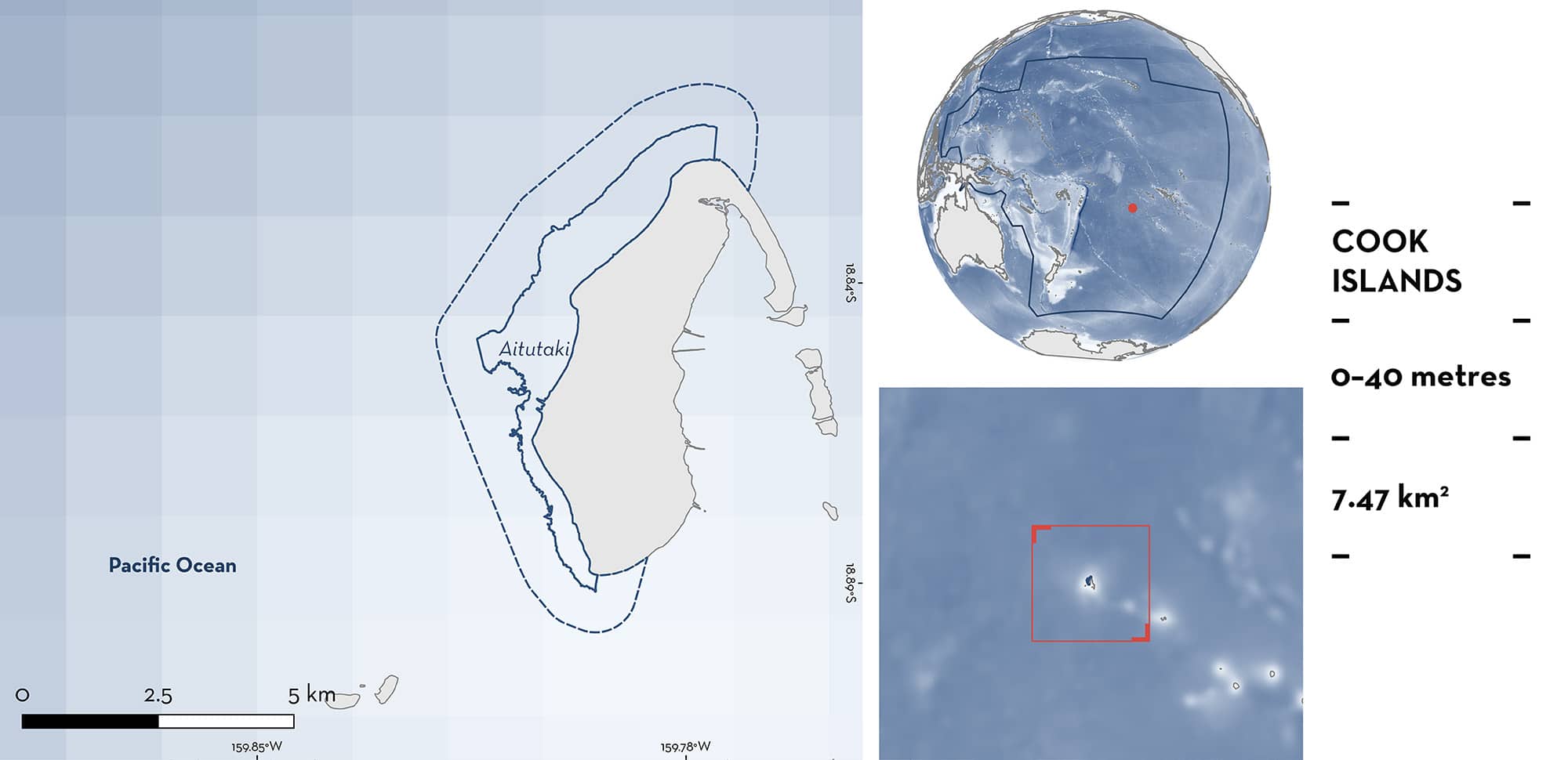ISRA FACTSHEETS
ISRA FACTSHEETS
NEW ZEALAND & PACIFIC ISLANDS REGION
Aitutaki
Summary
Aitutaki is located in the Cook Islands. The area encompasses the western side of Aitutaki Island. It is characterised by a barrier and coastal coral reef, which faces the inner lagoon on the southern side. The area connects the reef area to the inner lagoon system. It is characterised by relatively steep canyons. This area is influenced by semi-diurnal tides with small amplitude, and eastern winds year-round. Within this area there are: threatened species and undefined aggregations (Spotted Eagle Ray Aetobatus ocellatus).
Download factsheet
Aitutaki
DESCRIPTION OF HABITAT
Aitutaki is located in the Cook Islands. It is the fifth largest island of this jurisdiction and is situated within an encircling atoll of 15 islets and a lagoon. It forms the summit of a volcanic mass, located 225 km north of Rarotonga (Stoddart & Gibbs 1975) – the largest of the Cook Islands. The area encompasses the western side of Aitutaki Island and includes the respective area of the barrier coral reef. The area covers Arutanga Passage which is characterised by a coral reef which includes the barrier reef off the northwestern coast of Aitutaki, with the more coastal reef on the southwestern side. It is influenced by northeastern, eastern, and southeastern winds year-round (Stoddart & Gibbs 1975). The rainy season occurs between December–March. The dry season is most marked to occur between June–September. The area is also influenced by tides that are semi-diurnal with small amplitudes (Stoddart & Gibbs 1975).
This Important Shark and Ray Area is delineated from surface waters (0 m) to 40 m based on the bathymetry of the area.
CRITERION A
VULNERABILITY
One Qualifying Species considered threatened with extinction according to the IUCN Red List of Threatened Species regularly occurs in the area. This is the Endangered Spotted Eagle Ray (Finucci et al. 2024).
CRITERION C
SUB-CRITERION C5 – UNDEFINED AGGREGATIONS
Aitutaki is an important area for undefined aggregations of one ray species.
Spotted Eagle Rays are present year-round in this area. Aggregations have been recorded during scientific surveys and by recreational divers. Between 2010–2018, data from 5,647 baited remote underwater video station (BRUVS) surveys were analysed (of 85% of BRUVS deployed) from 58 sites across 18 nations (Cramp 2021). In this area, there were 24 sightings of Spotted Eagle Rays including five aggregations. The maximum number of Spotted Eagle Rays observed in one frame was 20 – the highest across all sites in the 14 nations where the species was observed (Cramp 2021). Aitutaki is also popular with recreational divers, who are attracted to this area for the regular and predictable presence of Spotted Eagle Ray aggregations (J Cramp & V Udaywer pers. obs. 2024; Tripadvisor 2024).
Recreational dives are regularly undertaken, and Spotted Eagle Ray aggregations are predictably observed on almost every dive. Snorkelers and divers undertake dedicated trips to this area which includes two hotspot sites for Spotted Eagle Ray aggregations: ‘Eagle Ray Alley’ and ‘Arutanga Passage’. The local dive operator regularly observes these aggregations (J Cramp & V Udyawer pers. obs. 2024), and tourists share observations of Spotted Eagle Ray aggregations online. From contemporary online citizen science data with photographic evidence, between 2019-2023 there were at least six observations of Spotted Eagle Ray aggregations ranging between at least 3–53 individuals (mean = ~23 individuals). These observations were photographed or video recorded by recreational divers/anglers in 2019 (n = 3 individuals on two occasions), 2021 (n = 53, 40, and 22 individuals), and 2023 (n = 16 individuals). Reports from recreational divers have been made between June–August, but further temporal information is required to determine seasonality. Mating behaviour was also recorded in 2019 along with feeding behaviour in 2023. Further information is required to determine the nature and function of these aggregations.
Download factsheet
SUBMIT A REQUEST
ISRA SPATIAL LAYER REQUEST
To make a request to download the ISRA Layer in either a GIS compatible Shapefile (.shp) or Google Earth compatible Keyhole Markup Language Zipped file (.kmz) please complete the following form. We will review your request and send the download details to you. We will endeavor to send you the requested files as soon as we can. However, please note that this is not an automated process, and before requests are responded to, they undergo internal review and authorization. As such, requests normally take 5–10 working days to process.
Should you have questions about the data or process, please do not hesitate to contact us.


